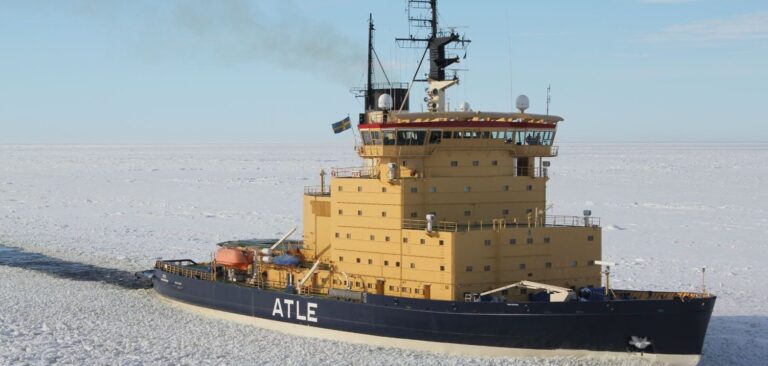Finland-based Aker Arctic Technology has won a joint procurement tender from Sweden and Finland for the design of zero-emissions icebreakers to service waters in the Baltic Sea.
Icebreaking is essential to ensure transports to northern Sweden and Finland during wintertime. Cargo ships need aid and a clear path to be able to pick up and collect goods from across the two countries. Currently, there are five active icebreakers in Sweden and nine in Finland, but this fleet is ageing and needs replacing.
According to the countries’ respective authorities, the emphasis of the design project is to find a solution that can maintain the current service level as the operating environment changes. The size of merchant vessels entering Finnish and Swedish ports is growing, and increasing environmental requirements are gradually limiting the engine power of the vessels.
“Our foreign trade and competitiveness are based on year-round security of supply. The stocks of import and export logistics are largely located in moving ships,” explained Kari Wihlman, director general of the Finnish Transport Infrastructure Agency.
“An adequate level of assistance available from icebreakers is a prerequisite for ensuring that the raw materials and different products are in the right place at the right time. New types of solutions are expected from this design project to respond to changes in the operating environment as well as to maintain an adequate level of service also in the future.”
“The Swedish industry is dependent on icebreaking in the Baltic Sea up to 130 days a year. Our current fleet is old with increasing needs of repairs. Therefore we very much look forward to the design of the next generation of icebreakers to service larger ships in a fossil-free environment”, added Katarina Norén, director general of the Swedish Maritime Administration.
The design process will start with research and evaluation on alternative icebreaker concepts. The new icebreaker is required to be able to assist ships with a 32m beam, be cost-effective in operation and have low lifecycle costs, while a transition to fossil-free fuel by 2030 and the reduction of CO2 emissions are also important goals.
Reko-Antti Suojanen, managing director of Aker Arctic, said, “This new ship will represent a completely new generation of icebreakers. With an operational lifetime spanning half a century, the new icebreaker must be designed to comply with future emission goals. Responding to this major technological challenge today will require us to apply the full extent of our icebreaker design expertise as well as to utilize the latest environmental technologies developed by the maritime industry.”
A concept is due to be selected in March when the first cost estimate for construction is available. Following this, the focus will shift to the design details and construction specification, which will form the basis of the shipyard tendering process once a decision to build the icebreakers is made.



